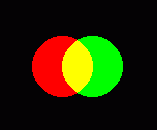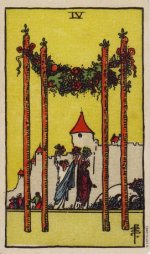La Force
It's all good hon, post what you feel is important to you, and beneficial to others in the future. You do not have to teach us. Say what you want, see, feel. If we dont understand we know where to look, if not we can ask you.I should have thought my post would confuse some, but I really can't apologize for it, nor even spend all my time teaching Kabbalah every time I need to mention something. What is down to earth for some may not be for others, and if I can gloss over completely subjective interpretations that mean little to me, I heartily invite other to do the same with my own posts. I certainly get just as glassy-eyed when reading "tall, dark stranger" practical meanings...
Anyway, yellow is made out of green and blue. Could Greer have done what Harris did in the Thoth; not merely using the color scales but mixing them up? The green is easy to attribute, it is traditionally the color of Venus, as has been mentioned. Blue actually is the color of Chesed, as can be seen here. Could that account for all the yellow? Well, it could account for some of it, but certainly not all. There is a certain amount of blue in the garland, but not enough to make any meaningful conjecture. A solar yellow is a good answer, connecting us to Jupiter, yet somehow I don't find it satisfying. Still, maybe I'll just have to. Probably an answer can be found in 777, but I'll have to look a bit later. And if we have Venus represented, where is Aries her mate? Are the red ribbons of Aries fastening and stabilizing the green garland of Venus? Aries isn't known as a stabilizer, except in a rather dictatorial fashion, he wouldn't tie down Venus like that.
Hmmm... I'm almost inclined to agree with whoever said that the background serves merely to focus our attention on the foreground, as much as that seems to dry up further investigation.
See you do have good insight to share, also some very good ? 's, it has me thinking, which is good, please keep contributing, I like.




